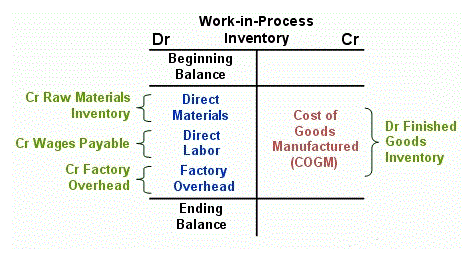
Non-profit bookkeepers need to understand and apply GAAP rules and fund accounting principles. The cash accounting method records transaction amounts when the money is transferred in or out of the organization. The accrual accounting method records virtual accountant the amounts when the transaction occurs, regardless of when the money is transferred.
What Is Non-Profit Accounting?
- As a bookkeeper, it may be necessary to meet with your nonprofit’s accountant weekly, monthly, quarterly, and yearly.
- Assign fair market values to in-kind contributions and include them in financial reports.
- They also handle online bookkeeping for nonprofits and to handle all financial expenses error-free.
- Doing your bookkeeping in Excel is a good option if you don’t want to spend extra money on software since you may already have the program installed on your work computers.
- Yep, success lies not in rescuing pygmy hippos from burning buildings (a crucial task, of course!) but in tallying numbers and balancing books.
- When it comes to payroll management, your nonprofit should be doing your accounting just like any other business with employees.
- These tools streamline processes such as donation tracking, grant management, and financial reporting, allowing organizations to focus more on their mission.
It details both the costs that your organization will incur as well as the revenue you expect to receive over a set period of time, usually a year. A good budget can act like a roadmap for a nonprofit, determining where and when the organization will deploy its resources, and whether it’s on the right track financially. When you reconcile your bank accounts, all you’re doing is comparing each transaction from your bank statement with the ones you have in your books. We recommend doing a bank reconciliation at least once a month to make sure your books are up to date and accurate, to help track cash flow, to prevent fraud and to detect bank errors.

Nonprofit accounting vs. bookkeeping
Nonprofit organizations are basically companies with their own set of financial rules and accounting systems. Depending on the size of your nonprofit organization and the number of transactions, it may be wise to do bank reconciliations once a month. That way, you’ll identify potential bank errors, help track cash flow, and prevent fraud. Thanks to the ubiquity of apps and services, entrepreneurs are most likely aware of the importance of bookkeeping for their businesses and have several tools already at their fingertips. The holiday season is a busy time for nonprofits, and BoxHero’s inventory management solution is here to help! Stay on top of your donations with our powerful features and make the most of every generous gift.

Leveraging Nonprofit Accounting Services

Understanding the key aspects of accounting will help your nonprofit better recognize the financial situation of your own organization. In addition, audits provide insight into the various opportunities that your organization has for financial stability and recording improvements. By addressing these opportunities accounting services for nonprofit organizations for improvement now, you’ll help keep financial data secure and well-reported in the future. You should check in with your budget monthly, comparing and evaluating your budgeted revenue and expenses against your actual revenue and expenses.
Resources
You may also need to provide other information, like unrealized gains or losses on investments and noncash transactions, such as depreciation or amortization expenses. As with any financial statement, ensure that all figures are accurate and up to date before submission. The point of this statement is to help determine whether or not the organization meets its goals or has enough funds to support its programs. You’ll be able to provide a snapshot of the organization’s financial health so that stakeholders can assess its performance and decide its future direction. The cash-basis method is usually simpler to maintain than the accrual-basis method and may be adequate for smaller nonprofits. However, the accrual-basis method may be necessary if the organization plans to seek funding from larger donors.

The following table compares the roles to help you determine the skillset you need. Nonprofit budgets are usually subject to scrutiny and approval processes. They’ll also be used throughout the year as a way to compare actual income and expenses versus the projections listed in the retained earnings budget.
Step 9: Generate Nonprofit Financial Statements
- As we’ve discussed, nonprofits need to use fund accounting to keep track of different funding sources and their respective designations for specific purposes.
- So, you can save money, achieve your mission, and do a better job of being ready for year-end, year-round.
- At Future Proof Accounting, we’re not just your bookkeepers – we’re your partners in prosperity.
- Most nonprofit-friendly accounting software like QuickBooks Aplos or Nonprofit Treasurer will allow you to generate financial statements automatically.
- When you set up your software to record and safeguard your financial information, be sure you choose a solution that has specific configurations for nonprofit accounting, such as Quickbooks.
- It details both the costs that your organization will incur as well as the revenue you expect to receive over a set period of time, usually a year.
Your nonprofit’s statement of activities is also known as your income statement. This report shows the revenue and expenses over time at your organization. Plus, you can use this document to review your change in net assets from the beginning of the year to the end of the year. A statement of functional expenses for nonprofit organizations is a financial report that itemizes expenses according to their purpose. This report provides information on where resources have been committed and allocated within an organization.
- Your nonprofit’s statement of cash flow shows how funding and cash moves in and out of the organization.
- For the most part, however, cash flow statements for non and for-profits are very similar.
- Taking care of overhead before seeking out donors for a nonprofit demonstrates financial responsibility and a commitment to efficiency—important decision-making factors for potential donors.
- For example, Quickbooks offers non-profit functionalities to help with fund accounting complexities.
- Just like for-profit businesses, nonprofit organizations must adhere to the Generally Accepted Accounting Principles (GAAP).
- Double-entry bookkeeping requires at least two entries per transaction — a debit from one account and a credit to another.
On the other hand, accountants usually need at least a four-year degree and may also have a fancy CPA license. Just because your organization qualifies to become a tax-exempt nonprofit does not mean that taxes never need to be paid. Your nonprofit can also be responsible for taxes on sales, real estate, and more, depending on your state of operation.
